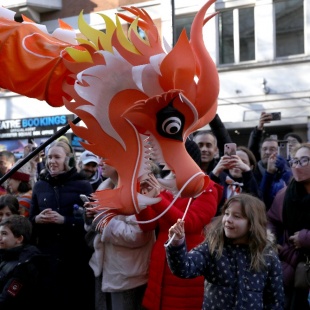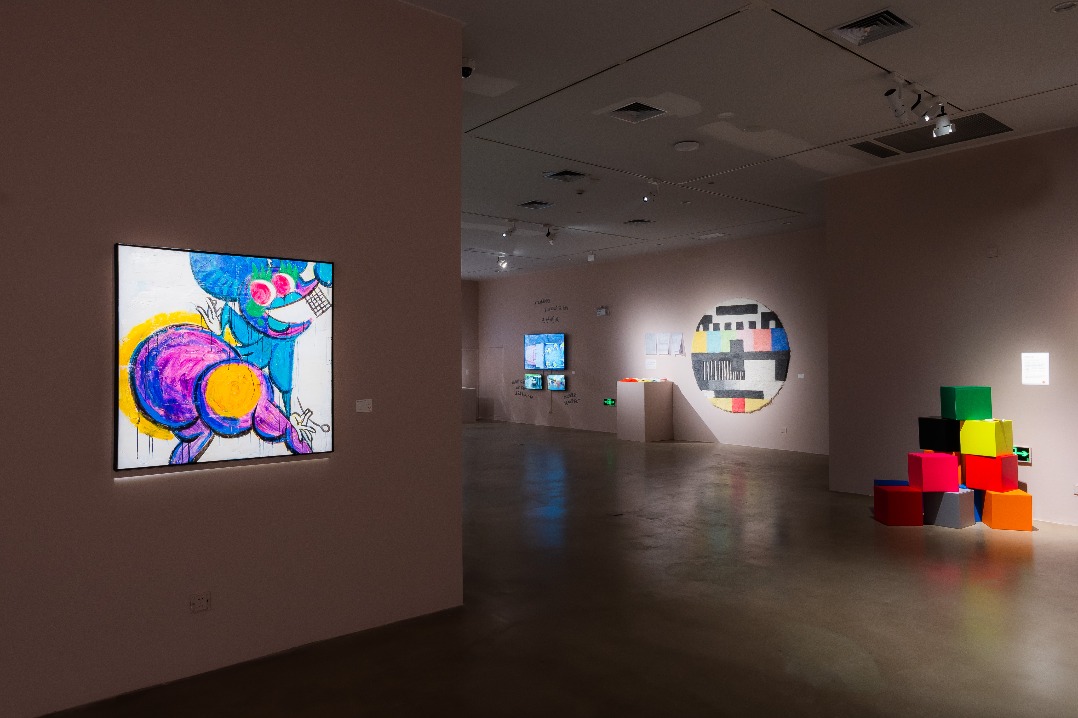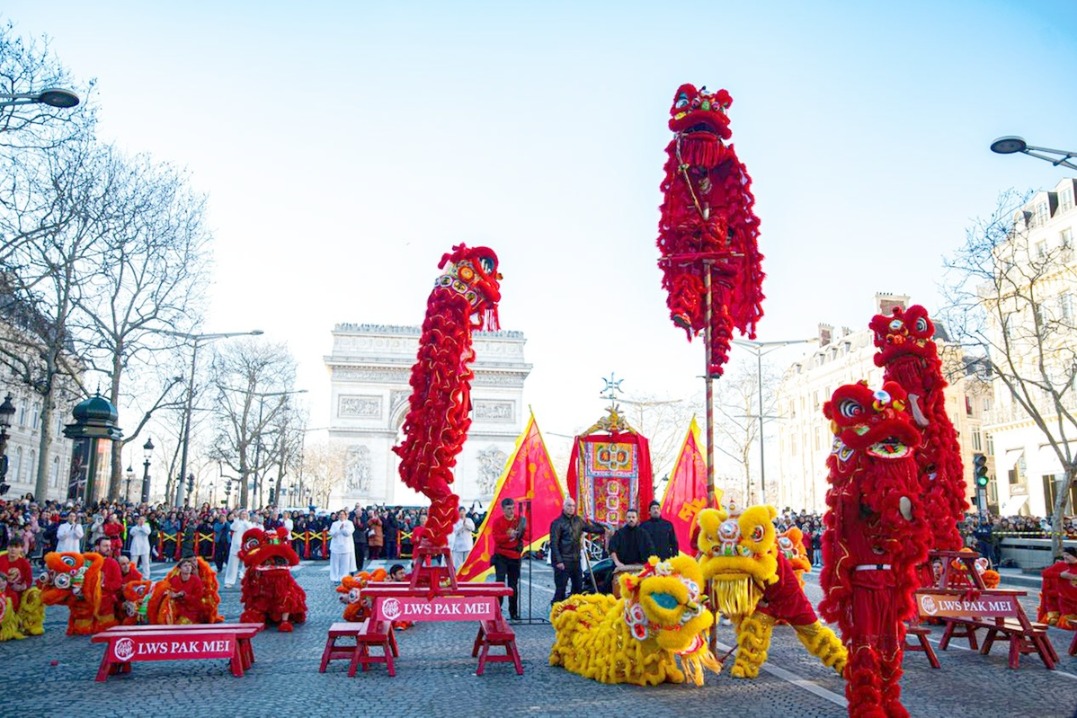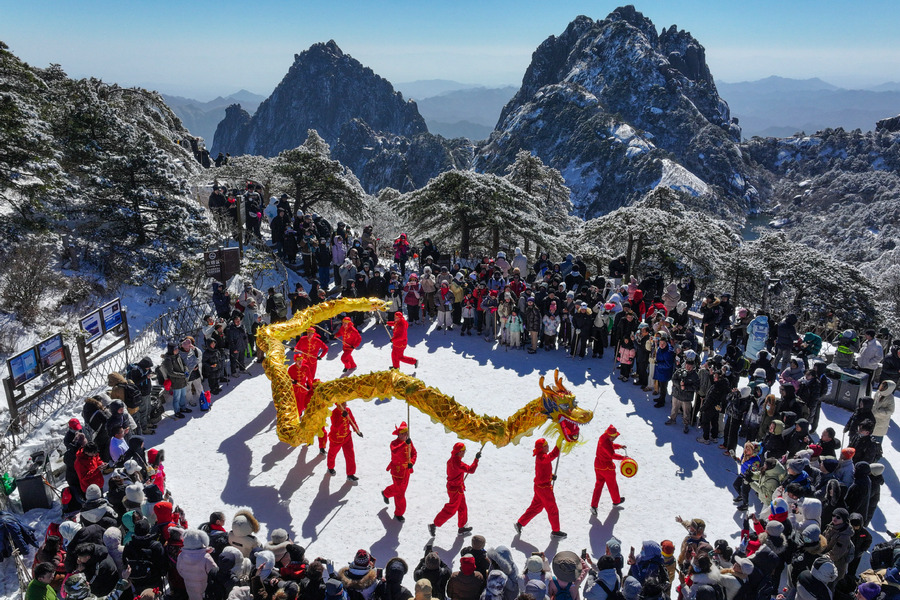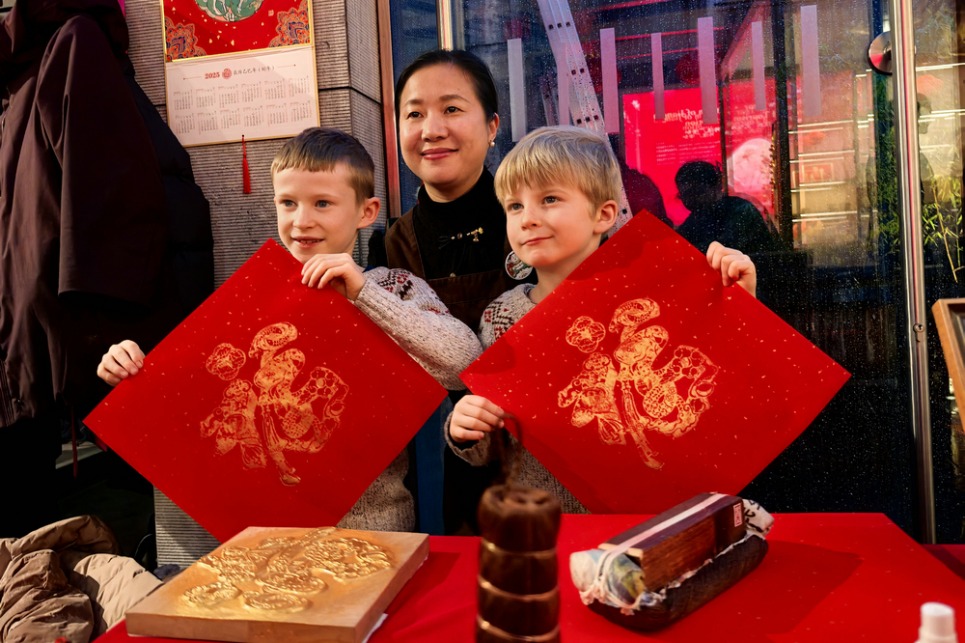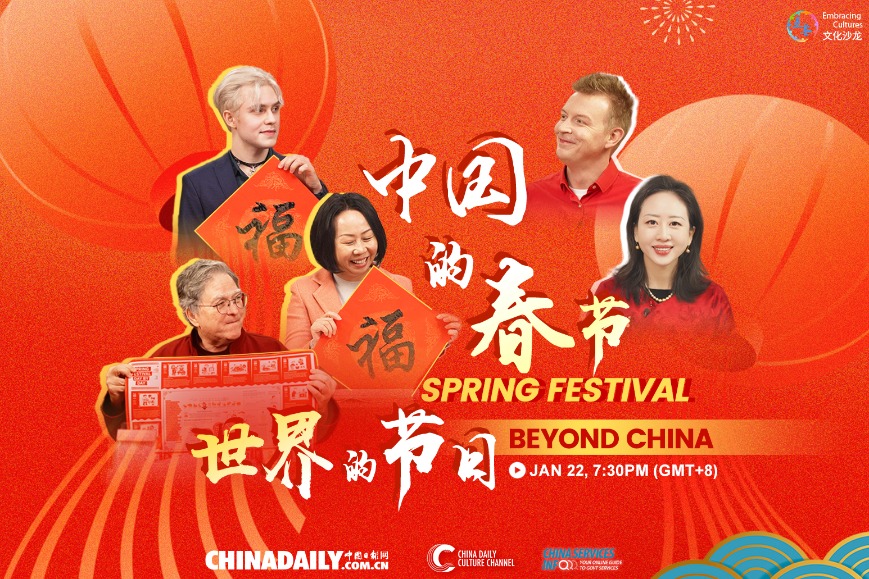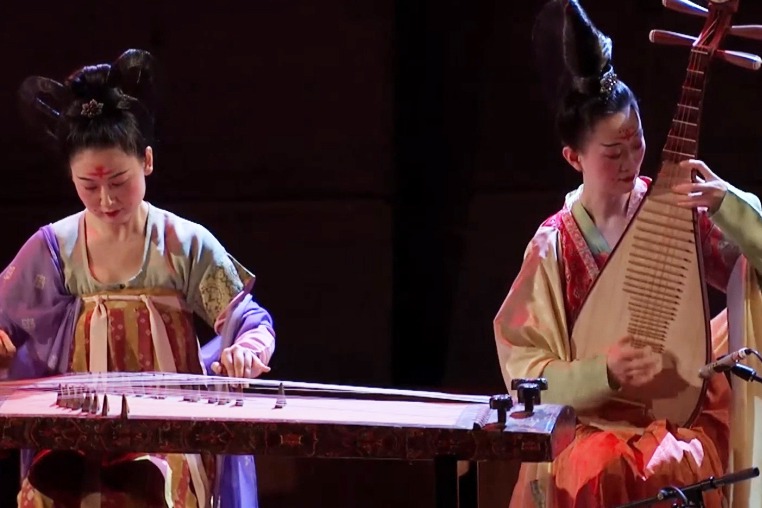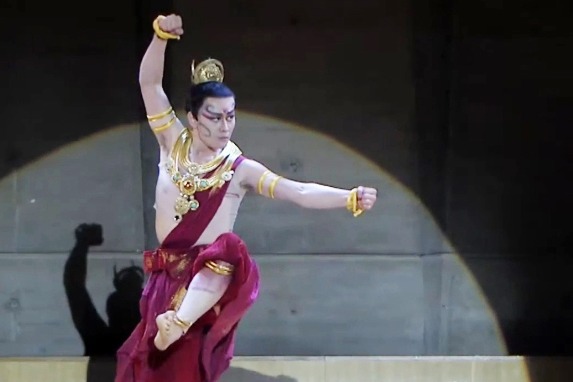Londoners get into the spirit of Chinese New Year

Hundreds of thousands of Londoners joined Spring Festival celebrations on Feb 2, the fifth day of Chinese New Year, at city landmarks including Trafalgar Square, Chinatown, and Leicester Square, proving the joy of Chinese New Year extends more than 8,000 kilometers, all the way to the United Kingdom.
Since its debut in 2002, the London celebration has been held 23 consecutive times annually and become one of the signature events on the official calendar of both the city and the UK government.
Organized by the London Chinatown Chinese Association, or LCCA, with the support of key London institutions, more than 20 areas were set up for the event, offering visitors the chance to experience traditional activities, including the chance to wear a head from a lion dancing costume, calligraphy, paper-cutting, clay making, a ring-toss game, and more.
The event was especially significant because Spring Festival has recently been listed as a UNESCO Intangible Cultural Heritage activity.
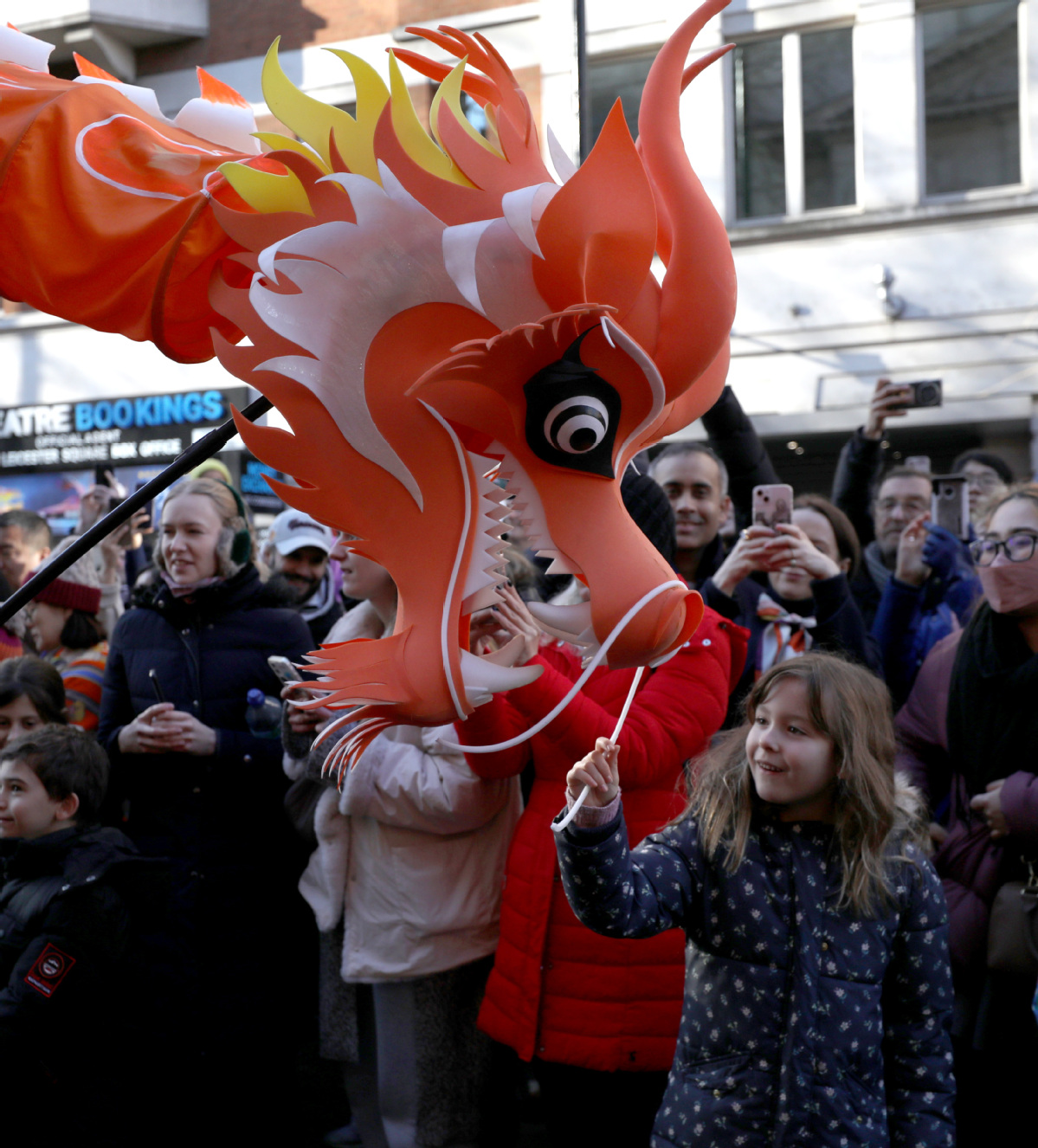
Here's how Chinese traditions resonated with people from various backgrounds.
Playing folk games was one of the standout activities. Amid the bustling crowd on Shaftesbury Avenue, George from Cyprus distinguished himself by throwing bang snappers on the ground with the help of his three daughters.
"It's enjoyable and especially fun with the children," he said.
Deep, from India, another participant remarked: "It feels like going back to childhood."
The longest and most eye-catching queue at Leicester Square was for the ring-toss stall. The game tested players' agility and precision, with them standing behind a line and tossing rings, attempting to snare a cone on the table in front of them. The game is similar to the ancient Chinese game of touhu, except instead of throwing arrows or long sticks as they did in the past, today's players threw rings.
The prizes were irresistibly charming – a festive tiger-head hat and an adorable headband with a little red snake coiled around it were on offer. In the crowd, you could easily spot a few bright red tiger heads bobbing up and down, worn proudly by both adults and children showing off their hard-won trophies.
There were also quiet games that required focus and creativity. A sibling duo, Talha and Eliska, showcased clay snakes they had made on one stall, and their attempt to write the Chinese character for snake character they had just created on another.
The fifteen-year-old brother explained: "I chose the snake (character) because it's the Year of the Snake. I learned about the 12 Chinese zodiac animals at school."
His sister added: "It was really simple, a lot simpler than I expected. I really enjoyed it. It was really fun."
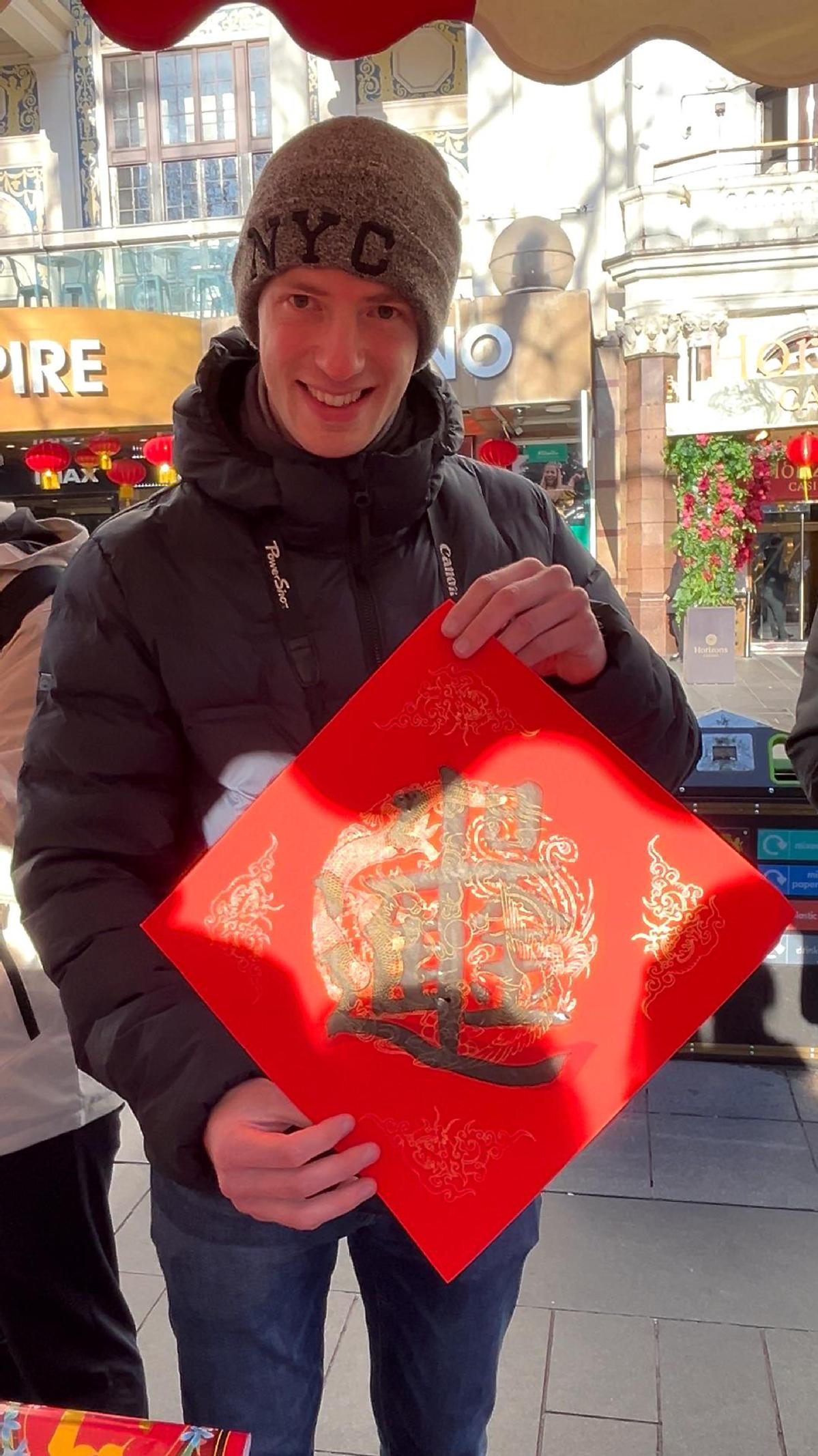
Practicing Chinese calligraphy is an essential festival activity and it is traditional among Chinese people to write the character "fu", which means blessing and happiness, with a brush. Many people were eager to try this ancient form of writing, gradually improving their skills after a few initial awkward strokes.
Luolan, who has Italian and German heritage, challenged himself to write the traditional Chinese character "jin", which means fortunes coming in, on a large square piece of red paper. His calligraphy was unexpectedly good, betraying a surprising depth of skill. "Jin" is particularly significant as the birthday of the God of Fortune falls on the fifth day of the Spring Festival, which happens to have been on the very day of the event.
Luolan's understanding of Chinese culture goes beyond mere curiosity – it is something he actively pursues.
When asked about the meaning of the character, Luolan, who has been taking weekly Chinese classes for a year, confidently responded: "It's 'jin'. It means fortune coming in. It takes a lot of discipline. But I enjoy the writing. I enjoy Chinese culture."
And on the subject of calligraphy, Spring Festival couplets are also a popular activity at this time of year.
Iris and Savannah proudly held their Spring Festival couplets.
"Kung Hei Fat Choi," Iris says, teaching her English-speaking friend the way to pronounce the phrase. After trying it in Cantonese, the Hong Kong-born woman repeats the "Happy New Year" in fluent Mandarin.
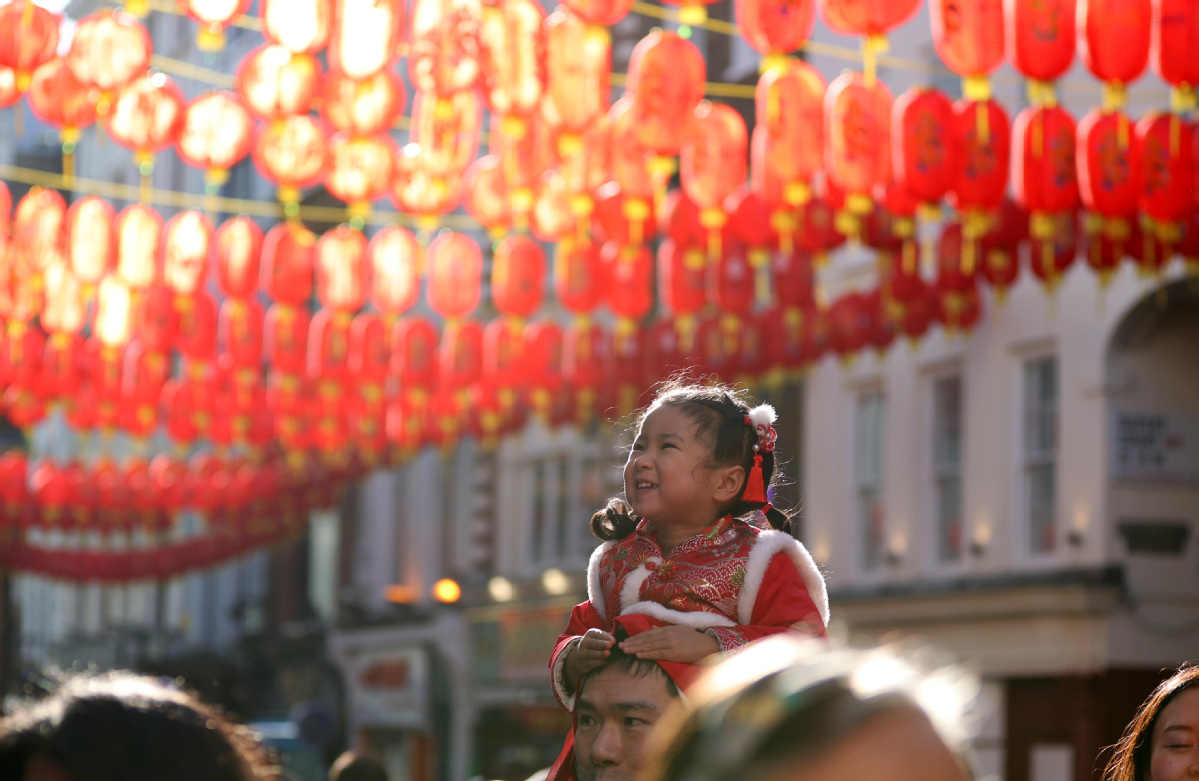
The two friends share a passion for Chinese traditional costumes. To boost the festival atmosphere, they attended dressed as a queen and a princess from the Qing Dynasty (1644-1911), striding confidently through the crowds in the Spring Festival parade. Iris wore an elegant black and pink phoenix robe, while Savannah donned a blue qipao.
"I love seeing all the different faces of everyone in the crowd, and the dresses and the enthusiasm," said the young woman from the US.
Zoe and Tom, a mixed couple, also embraced the traditional attires adorned with dragon decorations. Zoe, who has actively participated in Chinese New Year parades since leaving her hometown, Nanning, the capital of South China's Guangxi Zhuang autonomous region in 2017, said: "I want to share a little piece of my cultural heritage, showing what Chinese traditions look like here."
The personal touches of Chinese customs – such as calligraphy, costumes, and engaging games – were highlights of the awe-inspiring celebration in London. With lion dances, dragon floats, and various traditional activities, the festival atmosphere was unparalleled. It felt as if you were at a fair in the Temple of Earth in Beijing, but with people speaking different languages in front of the statue of William Shakespeare.
Celebrating Spring Festival has become increasingly popular worldwide. Looking to the future, the 15-year-old student Eliska said: "I would definitely do it again if I could."
Pi Wei contributed to this story.


